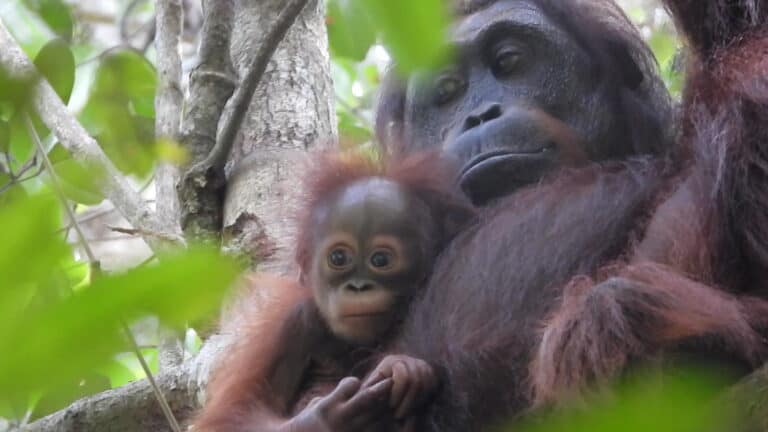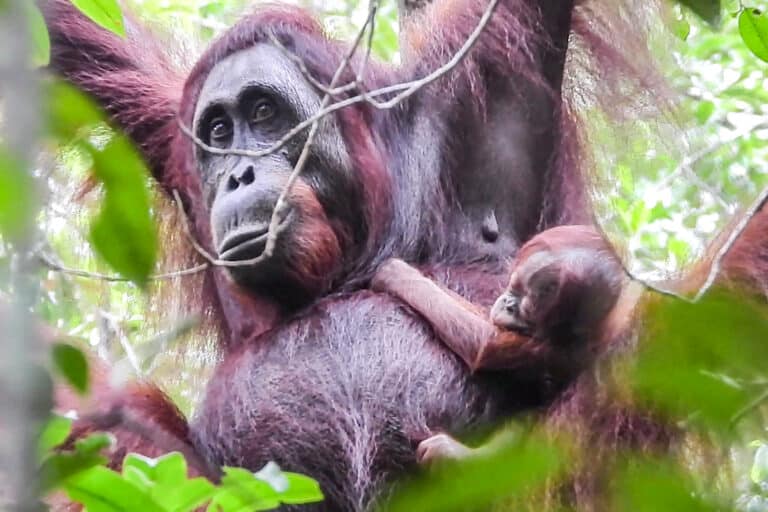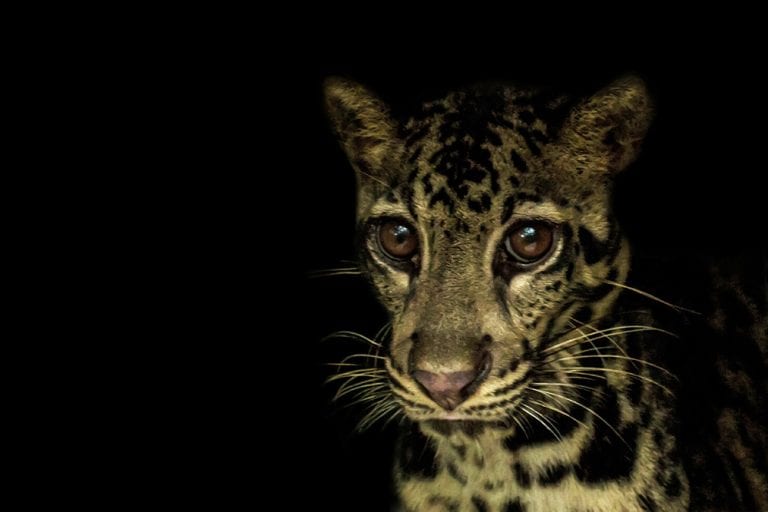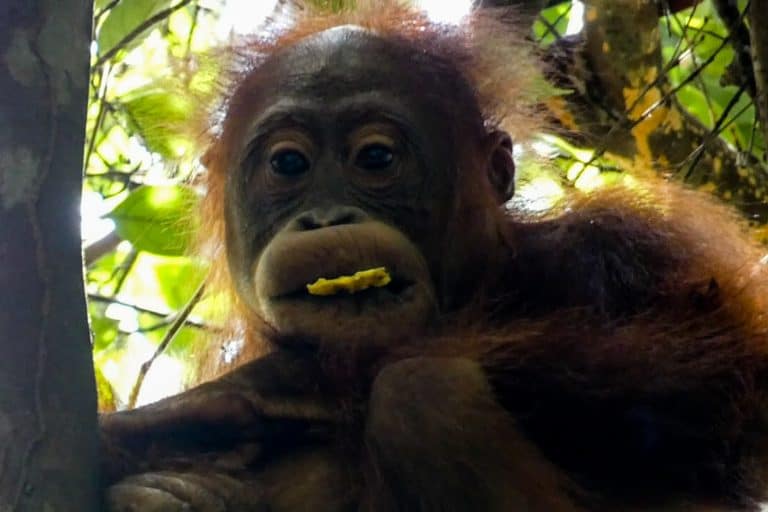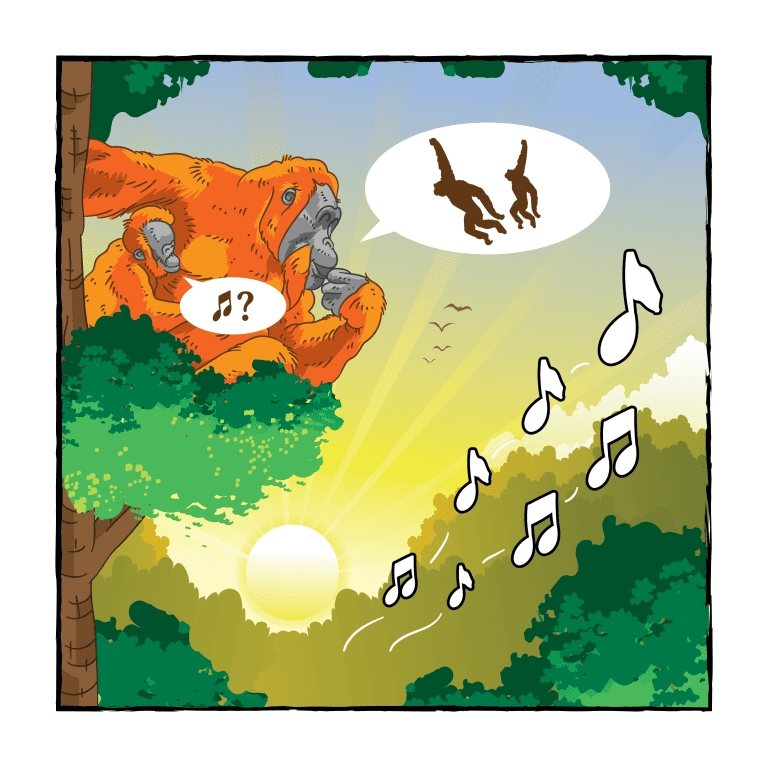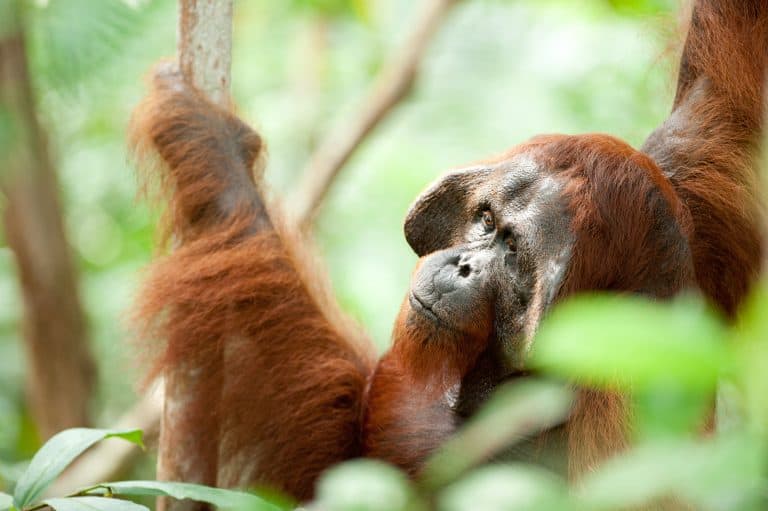Larissa Salaki, a Masters student from Indonesia and recipient of an OuTrop funded studentship, has just come to the end of her data collection in the Sabangau Forest. During the past 6 months, she has been studying the vocalisations of the elusive red langur monkeys or, as locally known, “kelasi”. Unlike gibbons or orangutans, vocalisations of red langurs has never been studied before. This project is the first study of its type, which makes it very exciting as Larissa explains.
There are two aims of my study. First is to answer the WHAT, WHEN, and WHO to make a complete inventory of red langurs’ vocal repertoire. WHAT different types of vocalisations do red langurs make? WHEN (in what context) do they emit those types of vocalisations? And WHO emits them? The second aim focuses specifically to answer the function of their famous “ka-ka-ka” loud calls. Can loud calls function as “individual identity”? And do their loud calls vary depending on the context?
| Red langur monkey or ‘kelasi’. Photo by OuTrop. |
To answer these questions, I went into the forest, searched for red langur groups (which can take four days or more as one group’s home range can be at least 105 ha!), and followed them daily from dawn until dusk. While following, I recorded vocalisations using a shotgun microphone and a digital recorder and also collected data on their behaviour. I also set up songmeters on different sleeping trees to record morning loud calls from groups that were not used to researchers following them around all day!
 |
| Setting up the songmeter in the forest. Photo by Chris Owen/OuTrop |
As of now, I have found at least ten types of vocalisations, such as the loud call, alarm call, squeak reply, cry, whine, and many others. Each vocalisation has a different context. For example, squeak replies are emitted only by females in response to loud calls or when a plane passes by.
Cries and whines are mostly heard from infants due to loss of physical contact from their mothers. Loud calls, on the other hand, are only emitted by males and can be heard in the morning, when encountering another red langur group, when a plane or helicopter passes by, and even when there are gibbons or orangutans nearby (but not always). Further analysis is still needed to answer confidently both aims of the study.
 |
| Larissa recording the red langur vocalisations. Photo by Chris Owen/OuTrop |
I feel very privileged to conduct my research here in Sabangau. It is indeed a beautiful forest though VERY wet and full of hidden holes! There were many exciting things I saw in the forest. I guess it is true that Sabangau holds the largest population of orangutan, since I saw five different orangutans in one day when I was following red langurs!
Another exciting moment was when I saw the endangered flat-headed cat strolling in front of my room in camp at 1am! I was so shocked at first, I thought it was Ballpen (the camp’s pet cat), but then it went off into the forest when I walked closer.
However, THE most exciting moment happened on the last few days of my follows. A juvenile long-tailed macaque came out of nowhere and decided to follow the red langur group I had been observing! It had been around for five days and it will be really interesting to know if the macaque will become a permanent member of the group or not.
I really enjoyed my time in Sabangau and I thank OuTrop for giving me the opportunity to be here!

